If you were the manager for a small company, hiring for a key position, you’d likely spend some time to pick the right candidate to train for your needs. Choosing a new dog should be exactly the same. If you pick a dog or breed that has the right aptitudes for the work you are asking them to do and the environment you offer, you are more likely to get good results.
Now, even the best candidate needs good training to be successful. Your dog’s success also depends enormously on how well you do your job as a trainer.
Traits of a Good Trainer
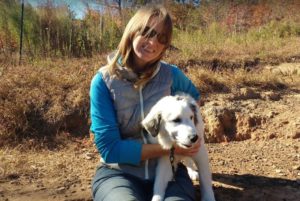
In general, being a good trainer (of people, dogs, and any animal) requires: 1) patience, 2) consistency, 3) thoroughness, and 4) an understanding of the natural tendencies of your trainees.
1. Be Patient
Without patience, you’ll expect too much too fast and will likely be disappointed. Puppies take time to potty train. Dogs don’t instantly learn boundaries or know exactly what they are and aren’t allowed to play with. These things simply take time and repetition to learn.
The age and natural learning ability of your dog, as well as your accuracy as a trainer, will determine how long it takes to complete the process.
2. Be Consistent
Without consistency, confusion is likely. If you only praise your dog half the time when they do something right and only discipline them half the time when they do something wrong, you are guaranteed to find yourself in a whole big training mess.
Inconsistency sends mixed messages about what’s right and wrong. Unless your new dog is a mind reader, you have to clearly demonstrate what you want and don’t want until they get it right every time.
3. Be Thorough
Without thoroughness, you’ll assume too much and get the incomplete results you deserve. If you tell a dog “no” when they go to the bathroom on your favorite rug, but don’t walk them outside to show them where you expect them to go, what happens? Probably they stop going on your favorite rug and start going somewhere else you don’t want them to go.
“No” isn’t enough. Saying “no” when a dog does something totally normal for them is like telling a hungry person at a buffet not to eat. You also need to offer acceptable alternatives.
For example, chewing and digging are inherent dog behaviors. Trying to eliminate them is futile. Instead, offer acceptable chew toys each time you find your dog chewing.
Dogs dig because they are bored or because they want to get what’s underground. To cure boredom, walk or play with your dog. To stop them from digging, remove the temptation by digging out whatever they are trying to get to or make it inaccessible to them.
4. Be Knowledgeable
One of the biggest mistakes people make when trying to train dogs, or any animal, is that they don’t consider the inborn qualities of the breeds they bring home. When you don’t understand your dog’s purpose and fail to tailor your training program to their natural behaviors, you create unnecessary challenges.
Sadly, so many dogs end up in shelters simply because new owners didn’t bother to do their research. That’s why I think that becoming a good dog trainer really starts with understanding and choosing the right dog for your circumstances.
Bred for a Purpose
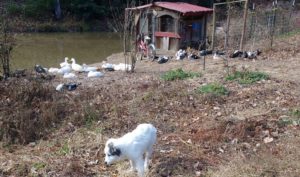
Depending on which kennel club you ask, there are anywhere between 202 and 344 recognized dog breeds. Each of those breeds was developed, perfected, and perpetuated for defined purposes. Generally, they fall into 7 classes of dogs.
Sporting Dogs
This class of dogs includes retrievers, pointers, and spaniels. Retrievers were bred as water dogs and used to finish killing and to retrieve downed water fowl. The other breeds in this group are used to track, find, point to, and help kill grassland fowl.
If any breeds were predestined to decimate your chickens and ducks, and bring you back lots of dead things, these breeds were.
Hounds
Hound-class dogs track by scent and explode into action when prey is found. They can take down small- to medium-sized animals and can work in groups.
Terriers
Terriers were bred to hunt rodents. Small terriers go down into burrows and get their prey. Larger terriers dig up burrows instead. If you want a dog to find rabbits or voles in your garden, this class is perfect. Just don’t be surprised when they accidentally dig up your strawberries, too!
Working Dogs
Working dogs are also called livestock guardian dogs (LGD). They were bred to protect herds and flocks from large-sized predators. Like any dogs, without proper training, they can be livestock killers, too. However, particularly if you choose LGDs that come from parents used on farms, they usually have a lower “prey drive” than some other dog groups.
They also bond more easily with other kinds of animals. Once bonded, they are loyal and protective, which is what makes them great livestock guardian dogs.
You May Also Enjoy: “Risking Life and Limb for Peaches? See Why Arina Started Using Dogs at the Permaculture Institute”
Herding Dogs
Herding dogs are highly trainable, which is why they are used for the complex task of moving large groups of livestock. They are good runners and can bring back escapees from a herd or flock in a flash.
Rather than bonding with the livestock, though, these dogs usually bond with their human and take their behavioral cues from them. Herding dogs often have exceptionally high energy and need regular work or exercise to keep them from getting into trouble.
Toys and Non-Sporting Dogs
The last two classes are catch-all categories for dogs that don’t fall into the other 5 groups. These have been bred for specific purposes, aesthetic qualities, or as pets. Toy dogs are what often call “lap dogs” and are often miniaturized versions of existing breeds. Non-sporting dogs can range from small to large.
There are huge differences in the breed qualities of all the dogs in these two groups. Doing detailed, specific research on each breed before bringing any of these dogs to your homestead or farm is critical.
What About Mutts?
If you are considering bringing home a dog that is a mix of breeds, such as from a shelter, then do your research by asking about the personality traits exhibited in the prior home (if known) or in the shelter. This, along with physical features, can help you ascertain what breeds they might belong to and what kind of behavior you might expect at home.
Choose the Right Kind of Dog for You
If you have free-range ducks and chickens, I would suggest automatically eliminating the sporting, hound, and terrier dog groups from consideration.
I did successfully integrate a very calm and gentle-natured Golden Retriever into my homestead without incident. In fact, my chickens and goats adored him. Unfortunately, other visiting terriers and retrievers (invited and not) have demonstrated extremely strong prey drive, even on lead. Based on those experiences, I just prefer not to consider dogs that have been bred to help hunt. However, if your livestock are all behind fences and you just want a companion, then your dog criteria might be completely different than mine.
The key is to know what you want from a dog and match the breed to your needs. This is a whole lot easier than trying to train a dog to do things completely against their nature (and hundreds of years of breeding history).
Breed Selection Criteria
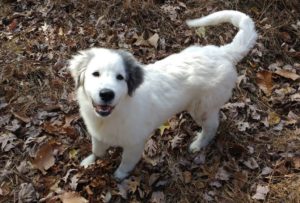
As you narrow down your selection, take into consideration these factors:
1. Size
Size matters a lot! Big dogs need more room to get around. Powerful tails can cause lots of breakage in small spaces. Large dogs often move furniture by leaning or jumping on it.
Big dogs also need more exercise than small dogs, just on the basis of size. Breed research may tell you that your dog only needs 4 brisk walks a day, lasting a total of 20 minutes, for good health. However, for a large dog, that’s more than a mile of walking. For a small dog, you might barely make it around the block.
2. Activity Level
For me, the activity level of a breed is an indicator of how much time I will need to spend with a dog to ensure good behavior. High-activity dogs need lots of time with their owners. They also need long walks, runs, and play sessions.
Lower-activity dogs still need exercise and attention. However, they may be better suited to independent play and self-exercising such as by roaming the house or yard.
All puppies, regardless of their mature activity level, need lots of exercise and attention if you expect them to behave well.
Low-Activity Dog
As an example, I recently brought home my first Great Pyrenees. Her breed is considered “low-activity.” Even being a low-activity breed, she easily needs 10 miles of exercise a day because of her size. Without this level of activity, she would be at risk for exhibiting excessive puppy energy and potentially endangering our livestock.
Luckily, I don’t have to take her out every time she wants to go. Once I had her trained to stay within the boundaries of our property and trusted her with our livestock, she was content to roam on her own.
High-Activity Dog
Alternatively, for my first yellow Labrador, when I put him out in the yard and let him exercise himself, he dug under the fence and took off on an extended trek around our neighborhood. To keep that from happening, I had to buy a bike and take him running long distances, twice a day. He also required regular swimming and retrieving of tennis balls to meet his exercise needs.
Kinds and Quantities of Activities Matter Most
Rather than focusing on ratings when researching breed activity levels, look for specific details on what kind and how much activity different dog breeds require. If you aren’t able to provide that kind of exercise regularly, choose a different breed (or expect a lot of behavioral problems when your dog has energy to burn).
3. Health
Some breeds are known for their health problems. A friend of mine had purebred champion-line cocker spaniels. They were so beautiful and sweet. Yet, they had constant ear, eye, or skin infections. Their health problems made them uncomfortable and short on rest. As a result, they had an inordinate amount of accidents in the house.
Health problems not only cost owners extra money, they make training extra challenging. Just like humans, who tend to be short-fused and make more mistakes when we don’t feel well, a less-than-healthy dog is going to struggle with routines and have more accidents. If you pick high-health-maintenance breeds, be ready for extra training challenges.
You May Also Enjoy: “The #1 Tip for Treating a Sick or Injured Dog”
4. Personality Traits
Some dogs are protective and territorial by nature. Others are open and friendly. Some dogs play well with other pups. Others prefer the company of people. Some are barkers. Some are quiet.
Depending on the purpose they were bred for, dogs will have different relationships with their owners, their land, and outsiders. For example, I have a friend with a beautiful Chow dog. This Chow is a perfect sweetheart around friends and family. However, if another dog so much as steps near her people, she’s likely to be lethal. Knowing that, her owners take special care to ensure she’s securely on lead when taking walks. They also limit contact with other dogs to minimize the risk of unpleasant encounters.
Meanwhile, my Great Pyrenees puppy is outside (as I write ) barking at a large group of golden finches foraging on our hillside. Barking at invaders (even tiny ones) is one of the traits of her breed. In rural North Carolina, this is no big deal. But, if I lived in a suburb, her booming bark would not be so welcome.
Conclusion
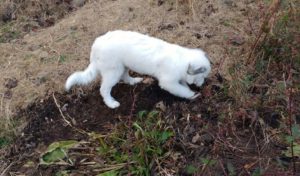
Good training requires both a good trainer and a good trainee. If you pick the right kind of dog for your needs and have the personal discipline to be patient, thorough, and consistent in your training methods, you’ll be off to a good start.
In the next post in this series, we’ll get into some specific tips and tools you can use to fast-track training at home. In the meantime, let us know if you have any tips, tricks, questions, or comments on dog training using the section below.

Tasha Greer is a regular contributor to The Grow Network and has cowritten several e-books with Marjory Wildcraft. The author of “Grow Your Own Spices” (December 2020), she also blogs for MorningChores.com and Mother Earth News. For more tips on homesteading and herb and spice gardening, follow Tasha at Simplestead.com.
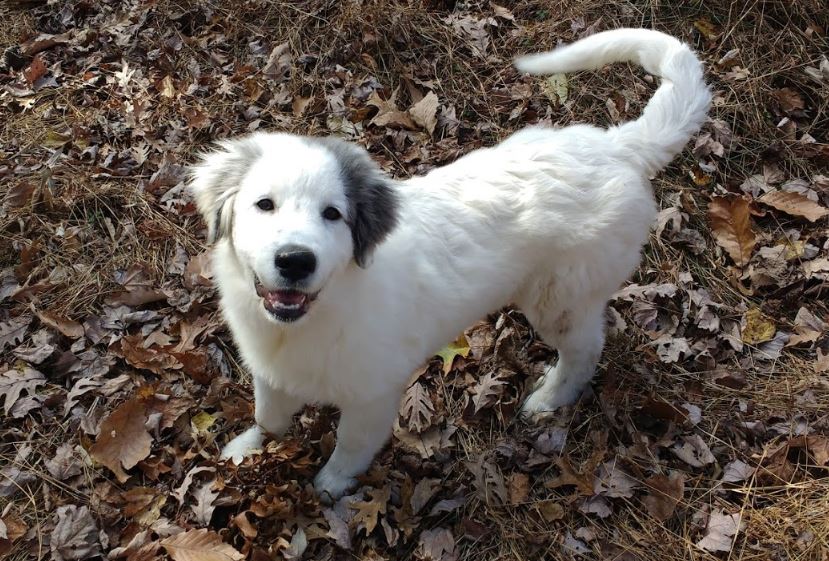







COMMENTS(2)
Good info and food for thought Tasha.
we had a dog trainer about 30 years ago when my parents got their first puppy and my mom could not control him..Shelly (the trainer could very easily) He always reminded us, its not the dogs fault its always the humans fault lol. (and of course dont use a hunting/working dog for a lap pet )